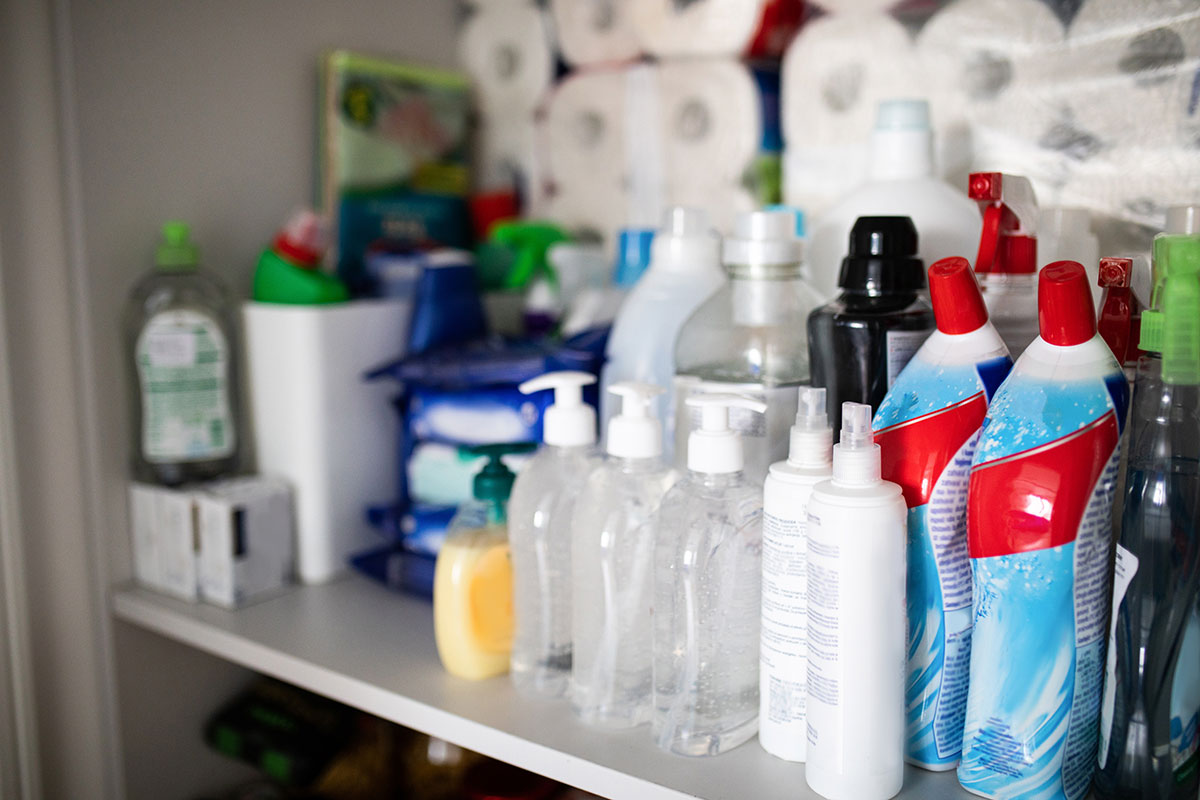-
Services
Featured Specialties
-
Locations
Location Type
-
Patients & Visitors
Published December 08, 2022

Common household items could pose a safety risk when in the wrong hands. Prescription medications, cleaning solutions, and even some toys could land a child in the hospital.
“As a pediatric emergency medicine physician and injury prevention advocate, I see preventable injuries from household toxins and devices far too often,” said James Dodington, MD, CPST, FAAP, Medical Director of the Yale New Haven Hospital Center for Injury and Violence Prevention and Assistant Professor of Pediatrics at the Yale School of Medicine.
It may come as no surprise that prescription medications can be some of the most dangerous substances to kids. Type 2 diabetes and blood pressure medications in just a single dose can be fatal. However, even over-the-counter drugs can poison curious children.
“What might be therapeutic for an adult might be a serious problem for a toddler,” said Yale New Haven Children’s Hospital Pediatric Emergency Department physician Carl Baum, MD, FAAP, FACMT, Professor of Pediatrics and director of the state-funded Lead Poisoning and Regional Treatment Center.
Dr. Baum said child-resistant packaging helps to slow down kids, but no container is truly child proof. In addition, transferring medications to day-of-the-week pill organizers can make it even easier for kids to get their hands on medications. That’s something to look out for when grandparents come to visit, who may not be used to keeping their medications safely secured.
Household cleaners can also be dangerous to kids, especially when certain combinations are mixed. The classic example is combining bleach and ammonia in a toilet bowl, creating chloramine gas. Other cleaning products such as laundry pods or pesticides stored in the garage or basement should always be out of reach as well.
Unfortunately, exposure to lead paint is still a big issue. Most children with lead poisoning in the U.S. are exposed to lead in dust from broken-down lead paint. While it’s standard for kids to get checked for lead at 12 months, the 24-month check is often overlooked. The best way to protect kids from lead is to avoid moving into pre-1978 homes where lead paint may be present. Families already living in an older home may need a professional inspection, and will need to take serious precautions if they decide to renovate.
Not all hazards are as obvious as a pill, bleach, or lead. One of the most dangerous objects that kids ingest can be found in the toy store. Magnetic beads that stick together can be fatal when swallowed.
“There is always a risk that the beads get separated after ingestion; they then re-assemble and pinch and perforate the wall of the gut. So, this is a real problem, and it continues to be a problem,” Dr. Baum said.
He has seen teens accidentally swallow these magnetic beads while playing around. Surgery may be the only way to remove them.
Prevention is the best way to keep kids safe from household toxins. Parents looking to move should be wary of older homes. Always keep medications safely secured and out of reach. Be wary of small items that can be easily swallowed. Dr. Dodington says parents should speak with their pediatrician who can help parents figure out ways to improve safety measures at home.
If a child is exposed to a toxin, parents should call the American Association of Poison Control Centers, which is staffed 24/7 with medical experts trained to answer questions about hazardous materials. Dr. Baum recommends parents keep the number stored in their cellphone or up on the fridge, because you never know when you might need it. Any serious reaction such as breathing difficulty or significant change in behavior should prompt a visit to the emergency department.